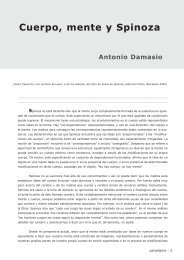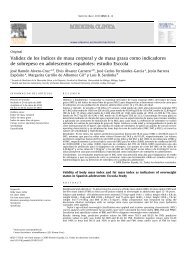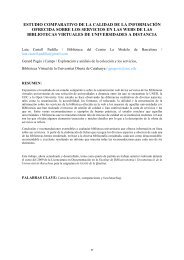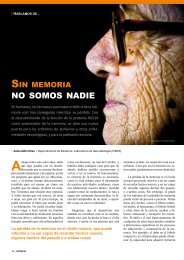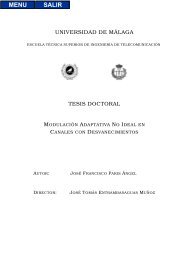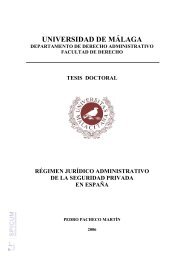Papel de las actividades superóxido dismutasa y catalasa en la ...
Papel de las actividades superóxido dismutasa y catalasa en la ...
Papel de las actividades superóxido dismutasa y catalasa en la ...
Create successful ePaper yourself
Turn your PDF publications into a flip-book with our unique Google optimized e-Paper software.
INTRODUCTION<br />
2005; Hou and Ch<strong>en</strong>, 2005; Vil<strong>la</strong>lta et al., 2005), the works using whole alga cells are still<br />
scarce (Blinkova et al., 2001; Val<strong>en</strong>te et al., 2006).<br />
As <strong>de</strong>scribed above, the combination of vaccination and immunostimu<strong>la</strong>nt<br />
administration could increase vaccine pot<strong>en</strong>cy. Thus, one objective is to evaluate a<br />
possible fish immunostimu<strong>la</strong>tion by administration of the alga P. cru<strong>en</strong>tum jointly with<br />
a vaccine formu<strong>la</strong>tion, evaluating a possible synergetic effect of both prophy<strong>la</strong>ctic<br />
methods against P. damse<strong>la</strong>e subsp. piscicida infection.<br />
4.4. IMMUNOSTIMULANT EFFECT OF POTENTIAL PROBIOTIC BACTERIA<br />
Definition of probiotics has changed along time. Thus, Salmin<strong>en</strong> et al. (1999)<br />
consi<strong>de</strong>r probiotics as “every microbiane preparation (not alive necessary) or microbial<br />
cellu<strong>la</strong>r compounds that have b<strong>en</strong>eficial effect on host health”. According to FAO<br />
probiotics consist of a microbial complem<strong>en</strong>t that affects b<strong>en</strong>eficially to host physiology<br />
by modu<strong>la</strong>tion of local and systemic immunity, moreover to improve microbial ba<strong>la</strong>nce<br />
by prev<strong>en</strong>tion of gastrointestinal colonization by non <strong>de</strong>sired bacteria. The advances in<br />
probiotic employm<strong>en</strong>t in cattle and human medicine have lead to consi<strong>de</strong>r their<br />
application in aquaculture, as an alternative in the fight against microbial infection<br />
(Sakai, 1999).<br />
Aquatic animals are very differ<strong>en</strong>t to terrestrial animals, therefore probiotic<br />
concept changes in aquaculture application (Verschuere et al., 2000). In aquatic animals<br />
there is a constant interaction betwe<strong>en</strong> the intestinal microbiota and <strong>en</strong>vironm<strong>en</strong>t. For<br />
this reason, in aquaculture systems the immediate <strong>en</strong>vironm<strong>en</strong>t has <strong>la</strong>rger influ<strong>en</strong>ce on<br />
the health status than in the case of terrestrial animals or humans. Due to the exist<strong>en</strong>ce<br />
of a continuous flux of water trough digestive tract, the fish intestinal microbiota is<br />
highly <strong>de</strong>p<strong>en</strong><strong>de</strong>nt on external <strong>en</strong>vironm<strong>en</strong>t.<br />
Verschuere et al. (2000) proposed a modified <strong>de</strong>finition: “as a live microbial<br />
adjunct which has a b<strong>en</strong>eficial effect on the host by modifying the host-associated or<br />
ambi<strong>en</strong>t microbial community, by <strong>en</strong>suring improved use of the feed or <strong>en</strong>hancing its<br />
nutritional value, by <strong>en</strong>hancing the host response towards disease, or by improving the<br />
quality of its ambi<strong>en</strong>t <strong>en</strong>vironm<strong>en</strong>t”.<br />
84




